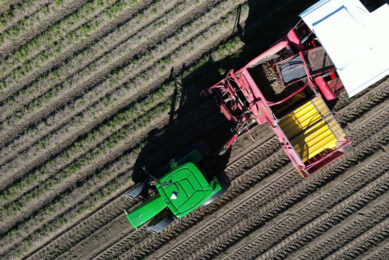Sensor tested for measuring nitrate levels in soil

Dutch research centre TNO has developed a sensor for measuring nitrate levels in soil.
The nitrate sensor developed by TNO may be used for monitoring nitrogen mineralisation in soil. Nitrogen is important for grass growth and the development of proteins in grass. Once it’s known how much nitrogen the soil can provide, farmers can calculate how much additional nitrogen in the form of fertilisation is needed for optimal grass growth.
Trials with nitrate sensor
Currently TNO and Dutch Wageningen University are conducting trials with the nitrate sensor within a project called DISAC. In this project agricultural companies, technology companies and research centres in the Netherlands work together to develop new technical solutions for precision farming.
TNO’s sensor measures the amount of nitrate in the soil. Using the sensor, frequent measurements are possible. In order to save energy and data storage capacity researchers are aiming for limited number of measurements per day, which will then provide an average value. By doing so, a series of measurement data is created, which allows keeping a constant eye on the process of nitrogen mineralisation.
As for now, the results of the measurements are read on the spot, but in the future it will be possible to do this from a different location. Then the results can be seen through a web application, and possibly including advice.
Fertilisation advice
When it comes to fertilisation advice, the amount of nitrogen the soil can provide forms an important indicator for how much nitrogen has to be added in the form of manure or fertiliser, and how it should be applied. In the nineties research was done on grass fields in order to find out whether determining the supply of nitrogen in the soil – in the form of nitrate and ammonium – can lead to better utilisation of nitrogen. These nitrogen fractions can be absorbed by the grass instantly. However, the amount of ammonium is usually quite small.
Text continues underneath image
How grass growth is related to nitrogen mineralisation
Researchers concluded that determining the supply of nitrogen in the soil would not lead to better results than using common fertilisation advice. However, the frequency with which nitrate levels were measured, was fairly low then. Today researchers think that daily measurements using a sensor may lead to different insights. While it’s not precisely clear yet how a nitrate sensor may help create better fertilisation advice, such a sensor would help to better understand how grass growth is related to nitrogen mineralisation.
The nitrate sensor is being tested in the Netherlands, at test farms Dairy Campus, Vredepeel en KTC Zegveld. The sensor is placed near the grass roots, 15 centimetres below ground level. The power supply – a solar panel – and equipment for reading out results are placed directly above. The goal is to see how the actual yields compare to yield prediction using models and remote sensing technologies for measuring yields and proteins in grass, and how the sensor could be applied in grass fields in a practical way.
Join 17,000+ subscribers
Subscribe to our newsletter to stay updated about all the need-to-know content in the agricultural sector, two times a week.



